In 2022 Americans will celebrate the centennial of the United States Navy’s aircraft carrier. Norfolk, Virginia, figures heavily in the history of these mighty ships. On March 20, 1922, following a two-year conversion at the Norfolk Naval Shipyard (actually across the Elizabeth River from Norfolk in Portsmouth), the former USS Jupiter (a collier) was recommissioned as the first navy aircraft carrier – the USS Langley.
I want to share several postcards of Navy aircraft carriers that were homeported in Norfolk at sone time in their illustrious career. Newport News Shipbuilding, across Hampton Roads from Norfolk, has built a number of aircraft carriers for the Navy including all ten nuclear Nimitz class carriers. The Norfolk Naval Shipyard repairs and overhauls the carriers.
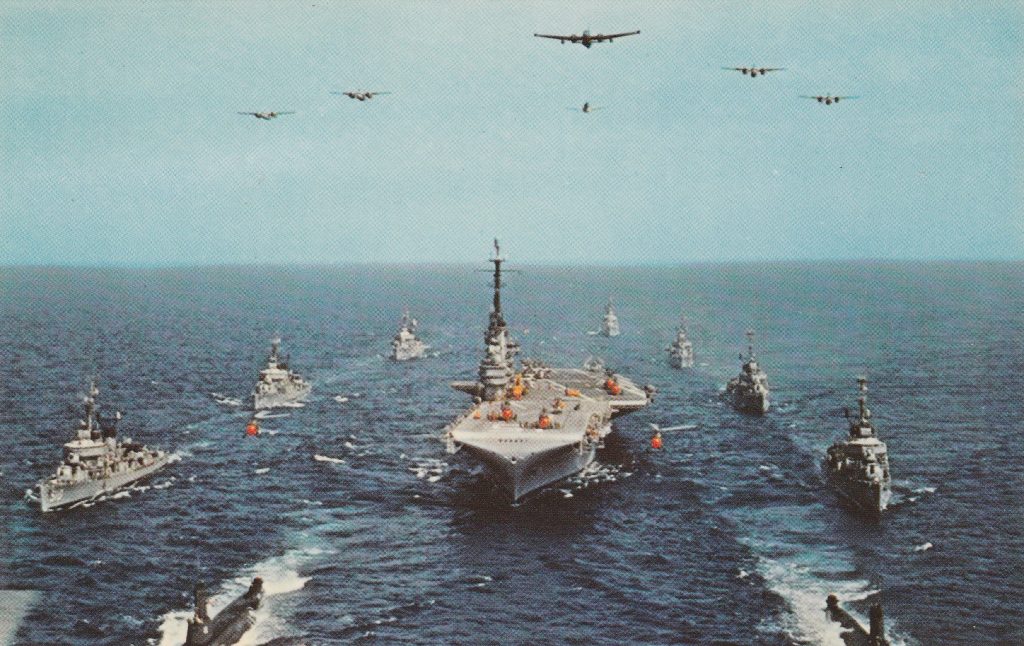
The Navy loves staging photo ops to show off its ships. The postcard above shows Task Group Alpha with an unnamed Essex class carrier in the center of the formation. During World War II, the Navy built twenty-four Essex class carriers, twenty-two of which served for many years after the end of the war. Thirteen saw service in the Viet Nam War. Nine Essex carriers were built at Newport News Shipbuilding and three were built at the Norfolk Naval Shipyard. During the 1950s, many of the Essex class carriers were modified by adding an angled flight deck and enclosing the bow. The Essex class carriers displaced 36,800 tons fully loaded and were 820 feet long. Several Essex class carriers built later in the war had longer hulls of 862 to 872 feet. Four Essex carriers are preserved as museum ships, the Intrepid in New York City, the Yorktown in Charleston, South Carolina, the Lexington in Corpus Christi, Texas, and the Hornet in Alameda, California.
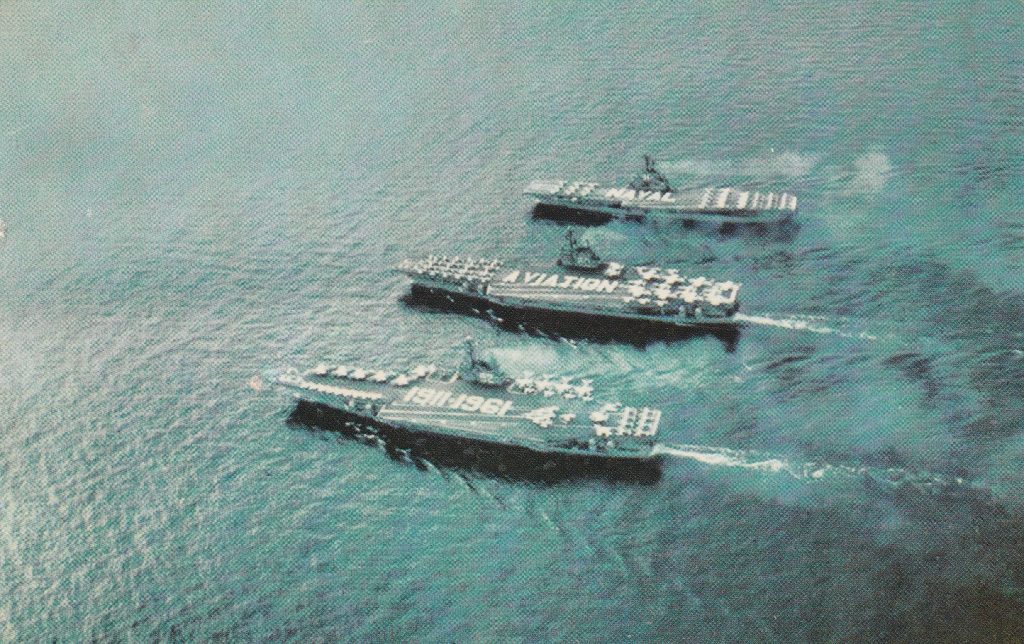
In 1961, the Navy celebrated the 50th anniversary of naval aviation by the carriers Intrepid (Essex class), and the Saratoga and Independence (Forrestal class) sailing in formation. The crews and planes of the three vessels were lined up on deck, with the crewmembers spelling out Naval Aviation, 1911 – 1961. Note the difference in size between the Intrepid (top) and the two Forrestal class super carriers.
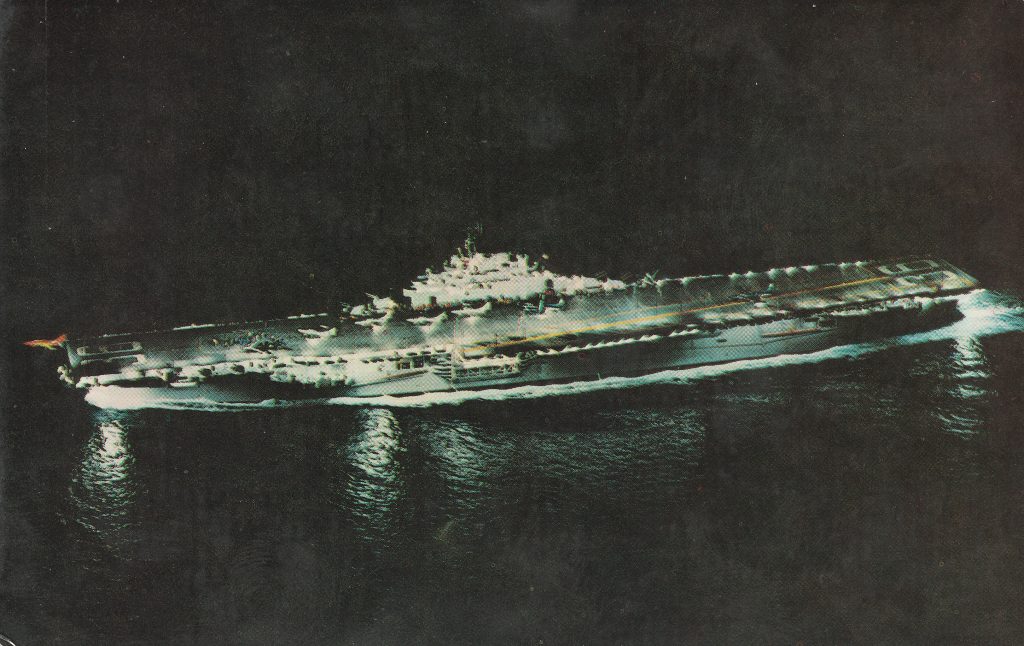
This card shows a jet fighter launched from the deck of the Antietam (Essex class) at night. According to the caption, “eight hundred Sylvania flashbulbs were fired by radio pulse which simultaneously tripped the shutter of a Fairchild camera mounted in the gondola of a blimp. Photolamp and electronic engineers of Sylvania Electric Products Inc. planned and executed this unusual photographic project.” The postcard dates from the early 1960s.
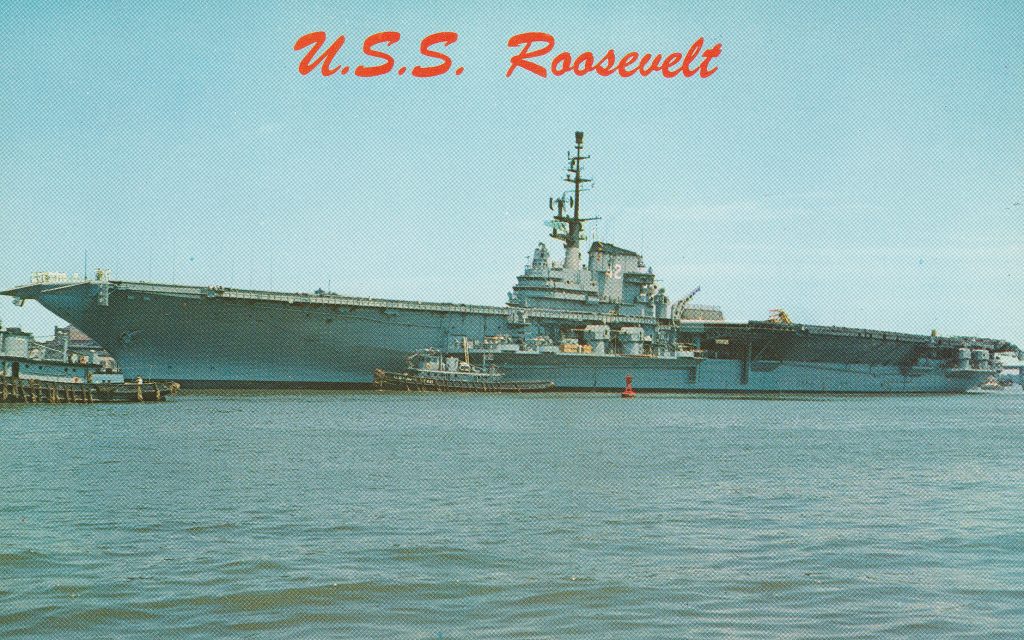
Three Midway class carriers, Midway, Franklin Roosevelt, and Coral Sea were completed shortly after the end of World War II and at the time were the largest ships in the world. Each one incorporated improvements to the Essex class carriers that were learned the hard way during World War II battles. When commissioned, the Midway class carriers displaced 45,000 tons and were 968 feet long. The Franklin Roosevelt was decommissioned in 1977 while the Coral Sea and Midway continued serving in the fleet until the early 1990s. The Midway is now a museum ship in San Diego and is well worth the visit.

The Navy’s first super carrier, Forrestal was commissioned in 1955 and decommissioned in 1993. She was 1,070 feet long and displaced 80,000 tons fully loaded. Her three sisters, Saratoga, Independence, and Ranger also commissioned in the mid-1950s, were designed to handle the increasing size and weight of jet aircraft. Three Kitty Hawk class carriers, Kitty Hawk, America, and Constellation were built in the early 1960s and were improved versions of the Forrestal. A fourth carrier, the John F. Kennedy, a variant of the Kitty Hawk class, was commissioned in 1968. She was the Navy’s last oil powered carrier. The last Kitty Hawk carrier was decommissioned in 2009. None have been preserved as museums.
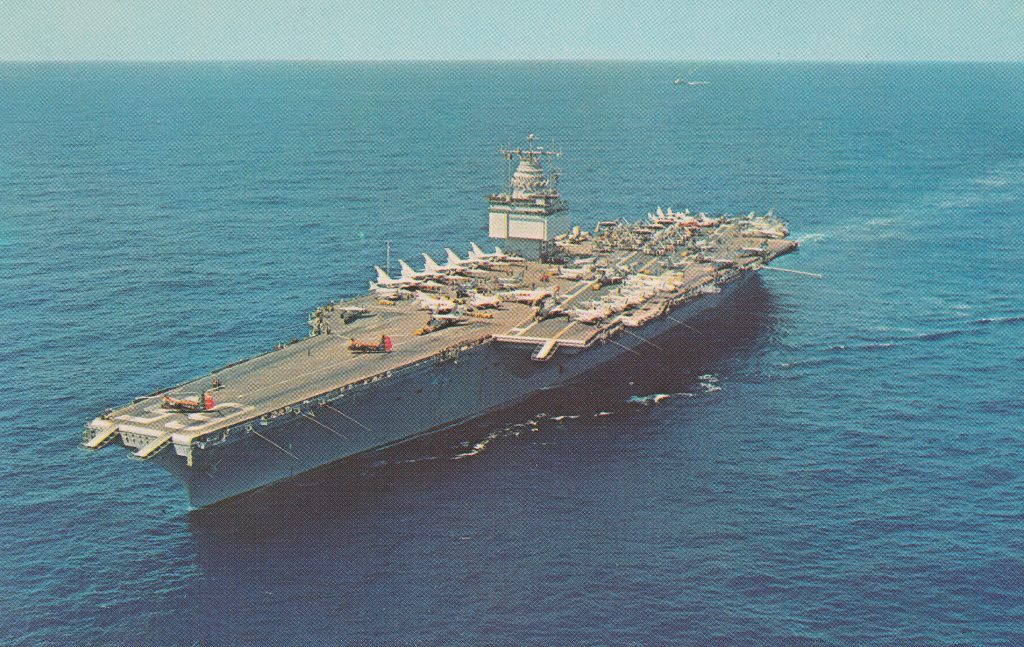
The Enterprise, the Navy’s first nuclear powered aircraft carrier, was the longest naval vessel ever constructed and built by Newport News Shipbuilding. Commissioned in 1961, Enterprise served until 2012. The Navy originally planned five more ships in her class but cancelled them due to the massive cost of constructing the Enterprise and went back to the drawing board. The Big E had eight nuclear reactors while the succeeding Nimitz class carriers only have two. Due to radioactive contamination issues, Enterprise currently sits at Newport News Shipbuilding while the Navy develops a disposal plan.
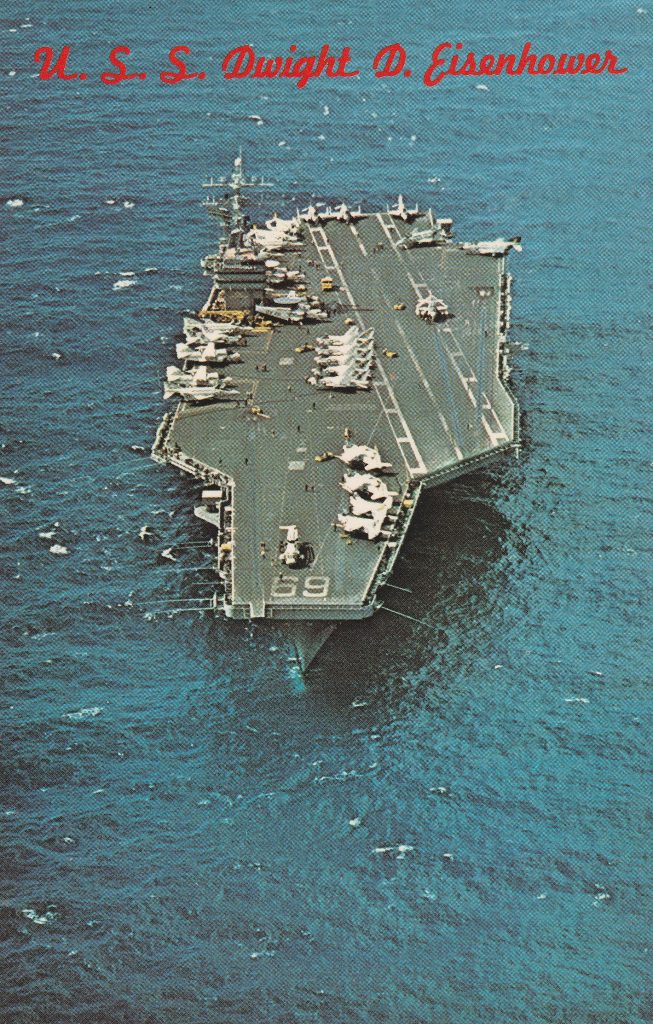
USS Dwight D. Eisenhower
The USS Dwight D. Eisenhower was the second Nimitz class nuclear carrier to be commissioned. Ten Nimitz class carriers were built. The Nimitz was commissioned in 1975 and the Ike in 1977. The last Nimitz commissioned was the George W. Bush in 2009. These carriers are designed to serve the fleet for fifty years or longer. The Navy’s newest carrier commissioned in 2017, the Gerald R. Ford, is the lead ship in the class designed to replace the Nimitz carriers.
Excellent history of aircraft carriers US was smart enough to start developing naval aviation early. Most naval officers in the 20’s believed in battleships as the key capital ships. Fortunately carriers continued to evolve producing the Essex Class, critical to victory in the Pacific in WW2. Postcard images are great.
Little would I know an Alameda, Ca, drugstore postcard purchase showcasing base and carrier assignment was the launch of postcard collecting. Full thrust took another decade. Positions in Public Affairs and Personnel were experienced on the west coast (Ranger) and Saratoga (east coast).
These remain the only ‘modern’ cards in my albums.
Since i attended college in the Norfolk area, this article brought back some memories. Our men’s JV basketball team occasionally played Newport News Shipbuilding.
Interesting article. It has been a few years since I visited a carrier. I remember being impressed by the size of the ships and the engineering that makes them work. The current ships are essentially a nuclear power plant that is able to move an airfield anywhere in the world that has ocean access.
One of my pleasures in life is when I visit this group. Such a pleasure to escape the everyday foibles and problems and share in universal joy of postcards!
Thanks for a great article, Dan. I love historic Navy postcards and have written about there history in the past but, sadly, have not concentrated on Aircraft Carriers. The U.S.S. Antietam card and your explanation was great! Enjoyed reading all about there great 100 year history!
Excellent article Dan! Interesting information about US naval carriers. I worked on the Eisenhower when I was in Radcon at the Norfolk Naval Shipyard in the late 70’s.